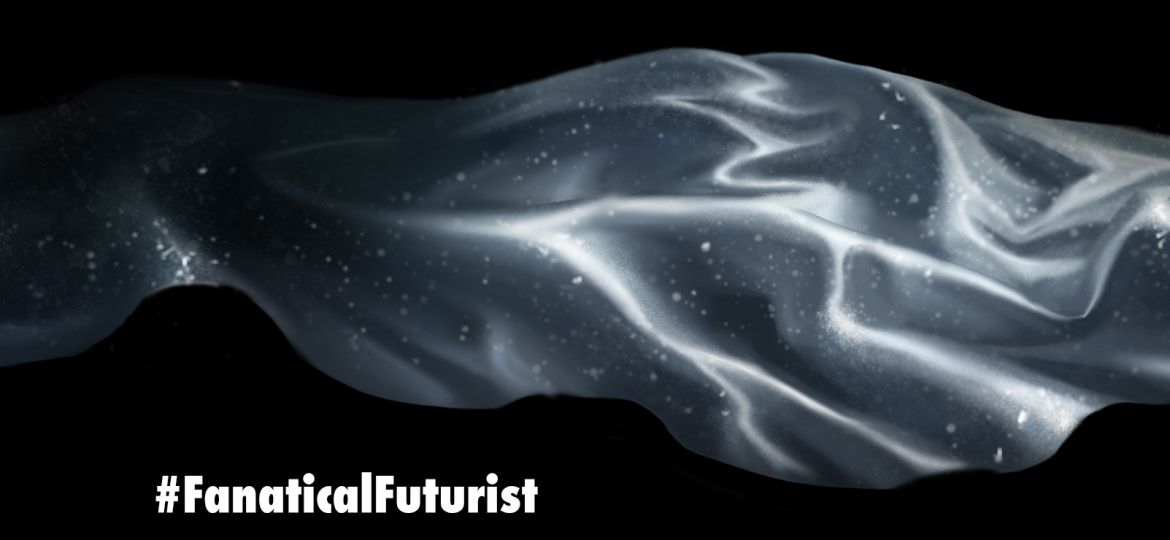
WHY THIS MATTERS IN BRIEF
Our ability to manipulate light is improving with every passing month, now a new Metalense breakthrough could help scientists create the first generation of genuine cloaking devices.
For as long as human beings have been writing science fiction the dream of being able to create an invisibility cloak has always been near the top of the wish list, and while franchises like Star Trek bought cloaking devices into popular consciousness today the fact of the matter is that the closest we’ve come to creating one is stealth technology, and that’s in spite of the fact that today we’re able to control and manipulate light in new, and often extraordinary ways, such as being able to bend it and turn it into a frictionless fluid, as well as using it to create decent holographic images, and, more recently, to create what many are now calling the first generation of amazing living holograms which frankly, if you have the time, you should watch in action.
While this invisibility to radar, which is basically just a form of long-wavelength electromagnetic radiation, might be seen by some as the first step to finally realising cloaking technology, over the past couple of years the rapid development of nanoscale metamaterials, that is materials with “strange properties not found in nature,” are helping us accomplish new amazing things, and one of them is helping us control and manipulate light, or more specifically wavelengths of light, in new, strange and wonderful ways.
The gallery was not found!
Using Nanofins to bend light
Now, the same team from Harvard University who recently announced they’d managed to use tiny “nanoscale titanium nanofins” to create the world’s first metalense capable of focusing the entire spectrum of visible light into a single point, and in short revolutionise camera technology, have now announced they believe the same technology can be applied to help them bend light around an object, rendering it undetectable to both sensors and the human eye. A cloaking device by any other name…
When it was first announced the new metalense, which is officially referred to as a broadband achromatic metalense, became the world’s first metamaterial able to cover the entire visible light spectrum, and the team, led by As Wei Ting Chen, believe that the fusion of this technology with what’s known as “metamaterial cloaking” could, one day soon, help scientists create the first true visible-light cloaking device.
Under normal circumstances, when you bombard any material with light of any wavelength its typical behaviour is to either absorb the light or reflect it.
If the light is absorbed then any background light and “signals” will be obscured, alerting you to its presence, in other words, the object won’t be transparent, and, similarly, if the light is reflected, those same light and signals will be bounced back to you, lighting it up and letting you observe it directly.
While stealth technology minimises the reflectiveness of a material a true “cloaking device” would have to be able to divert, or bend, light and other signals around itself so noone could see or sense it, and this is what the Harvard teams metalense, with some tweaking, looks like it’ll be capable of achieving.
Spaced as far apart as the wavelength of the incident light hitting them the new metalenses’ nanofins can guide the different wavelengths of visible light through and around the metamaterial as desired, allowing them to bend the different wavelengths of light by exactly the proper, necessary amount to have them wind up where the researchers want them to be. Asides from being awesome, the new technique would also make the new “wannabe cloaking tech” cheap and easy to produce.
“By combining two nanofins into one element, we can tune the speed of light in the nanostructured material,” says As Wei Ting Chen, one of the lead researchers, “this dramatically reduces thickness and design complexity compared to composite standard achromatic lenses.”
So while invisibility cloaks, other than the hoax ones you “see” on YouTube, still aren’t a reality, it’s looking increasingly likely that one day, one day soon, they might start emerging for real. That said though, how will we ever truly know, because isn’t the whole point of a cloaking device the fact you can’t see it or sense it?
The team published the details of their work in Nature Nanotechnology.
















